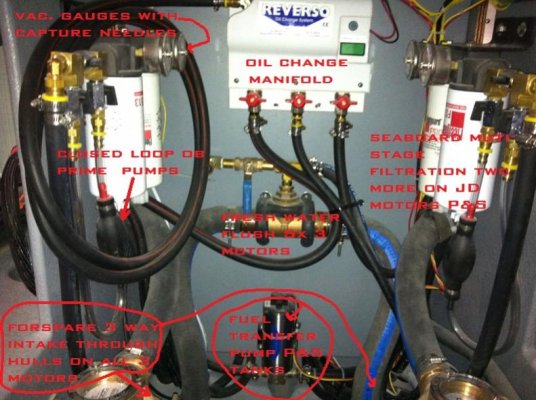sunchaser
Guru
- Joined
- Apr 9, 2008
- Messages
- 10,196
- Location
- usa
- Vessel Name
- sunchaser V
- Vessel Make
- DeFever 48 (sold)
Food or thought on vaccum gauges:
Was thinking about this after consuming an adult beverage (beer), so this may not be throughly developed. My fuel tanks are about 28" tall. For the sake of the discussion, let's assume the lift pump height is at the middle of the tanks. The vaccum gauge is reading inches of vaccum. To my understanding, an inch of vaccum, if there is no restriction in the filter element, would be to lift the fuel from 1" below the level of the lift pump in the tank up to the lift pump. If the fuel level was 10" below the lift pump, the gauge would show 10" of vaccum. If the fuel level was above the lift pump, there would actually be a positive pressure in the filter and at the inlet to the lift pump. Again, assuming that my lift pump is at the middle level of my 28" tank, does that mean that the theoretical reading on my separator gauge could be anywhere from 14" of positive pressure to 14" of vaccum with a clean unobstructed element? If this is correct, with 3/4 full tank I could have 7" of diffential vaccum (difference between filter inlet and outlet with a mostly clogged filter) and show no vaccum on my gauge. Is this correct or am I missing something?
Ted
A proper vacuum gauge will read in inches of mercury if you are in English units. A perfect vacuum is 29.9 inches of mercury or 14.7 psi at sea level. Inches of fuel would have to be converted to inches of mercury for your math to fall into place.


